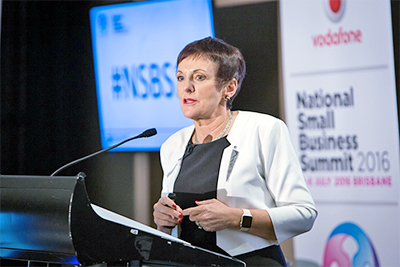How will people be drawn back to office work?
By Leon Gettler >>
A BIG ISSUE now for businesses is that employees are coming back to work, after the lockdown, but the world has changed.
Work places need to accommodate the new conditions and social distancing. And many employees who have been working remotely are reluctant to come back.
Office National CEO Gavin Ward said businesses need to come up with some ingenious ways to entice staff back to work. These include perks, creative activities, wellness equipment, elaborate desk top accessories, parties and more.
“There’s a variety of reasons that people don’t go back. Some may say ‘I don’t want to do the traffic’ but I think you have to look after some fundamental things to make it work,” Mr Ward told Talking Business. 
“The first thing is we can’t ignore COVID. Make it safe. So one of the exercises is ‘Am I going to be safe in the new workplace’. So if you’re going to start talking about people, you will need good communication in terms of the way you’re going to prepare the workplace to ensure that they don’t get an infection so you’re going to have the right processes to say you’re going to wipe down the surfaces on a daily basis, that you’re going to have the wipes and all those sorts of things. So there is a fundamental thing, you’re going to make it safe.
“What you’re going to have to do is create an environment when they come back that they’re going to be engaged, that they’re part of the team. You’re going to promote connection about objectives, about what you’re doing and how you’re succeeding. These kinds of fundamentals are really important.
“The other thing business owners need to do is make them feel comfortable. Some businesses have been encouraging people to bring their dog into work, bringing part of the world they have at home into the office. Dogs also have an impact on the other people in the office and calming folks. Other employees might instead bring in a pot plant,” Mr Ward said.
“Business owners also need to look at the office environment. Is the light right for employees to do their work? Are there multiple screens elevated to the right height? Are the keyboards ergonomic? Are there brush-pens? Are the chairs right? Do they give good support? Can the seat be moved in and out?
“If you do these things and get the right equipment, when they come back they’ll find they’re much more connected, they’re much more productive and they can create really solid great work,” he said.
FACILITIES IMPORTANT
Fitness and wellness equipment at the workplace will also be important. Milestones like birthdays, anniversaries, promotions, successes and good occasion should also be celebrated.
Mr Ward acknowledged that many employees, after spending months working from home, would opt to come into the office three or four days a week, and do the balance from home. Companies will need to accommodate that.
“I think the world has changed forever and we’ve always had to consider the different styles of people we work with,” Mr Ward said.
“Part of what we’re doing is we need to entice people for the times that we need it, but I think we will always need to be agile and have some people working from home because I think they just won’t fit in the new workplace.”
He said the trend to hot-desking will be harder to sustain in the post-COVID environment.
“So the concept of working at a desk, getting up and moving your stuff back and someone coming down and sitting in that same space and ensuring that’s clean and ensuring you have the distance and socially isolate with the person next to you is going to be extremely challenging,” Mr Ward said.
wwwleongettler.com
Hear the complete interview and catch up with other topical business news on Leon Gettler’s Talking Business podcast, released every Friday at www.acast.com/talkingbusiness. 







